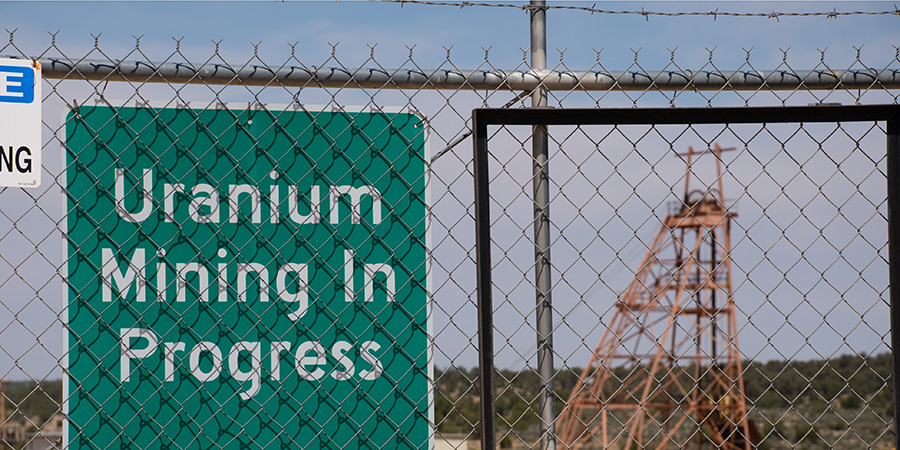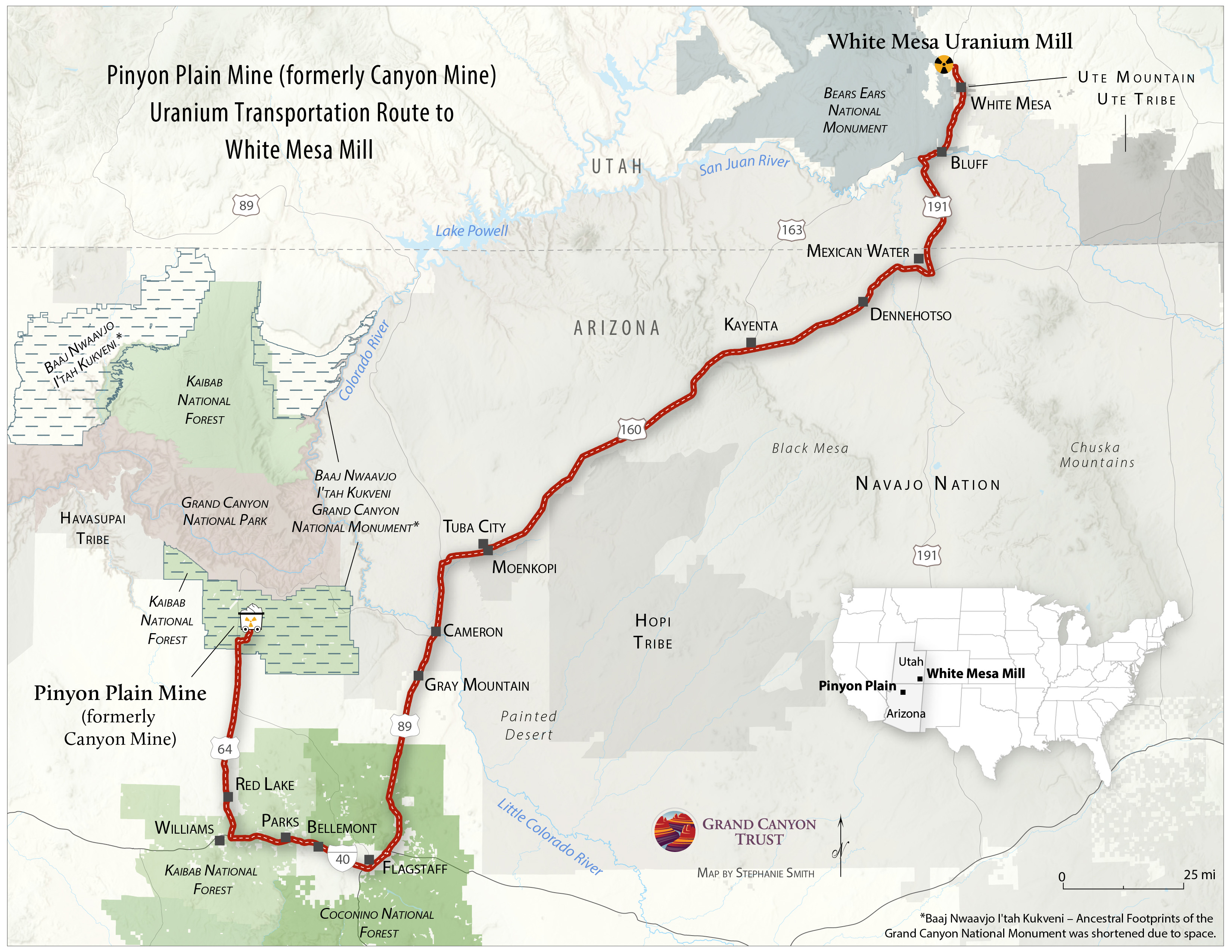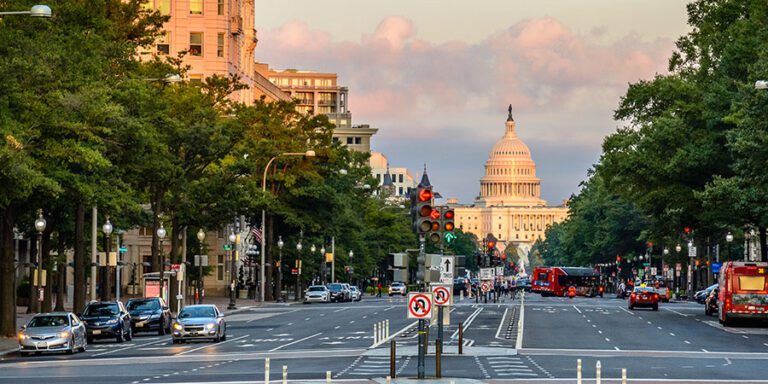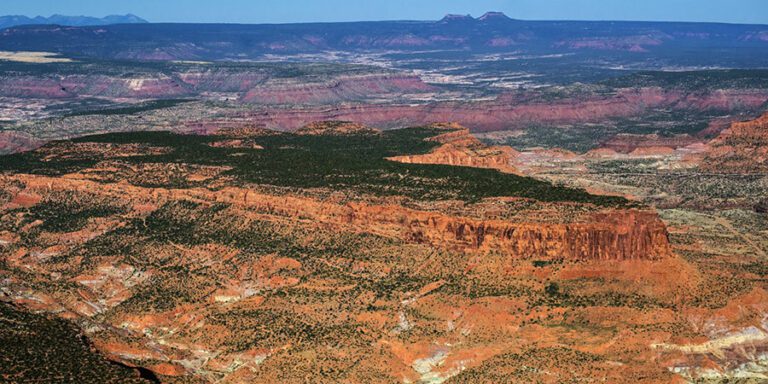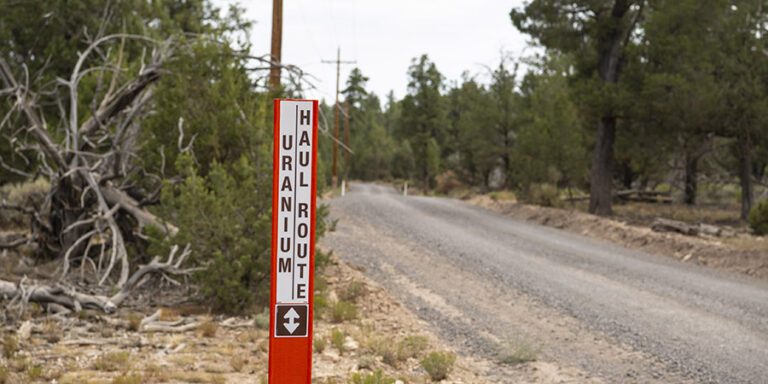
Uranium mined at Pinyon Plain Mine near the Grand Canyon is just a drop in the bucket. Given the mine’s location, it’s simply not worth the risk.
Energy Fuels Resources’ Pinyon Plain Mine (formerly Canyon Mine) continues to operate inside Baaj Nwaavjo I’tah Kukveni – Ancestral Footprints of the Grand Canyon National Monument. Currently, the mine is sending five trucks a day loaded with radioactive uranium ore to the White Mesa Mill and expects that number to double to 10 soon. Meanwhile, Pinyon Plain Mine’s groundwater problems continue, with nearly 8 million gallons of groundwater pumped out of the mine in 2024.
The controversial uranium mine is exempt from the national monument’s mining ban and from a 2012 U.S. Department of Interior ban on new mining in the region. It has produced relatively little uranium while putting precious groundwater in the Grand Canyon region at risk.
After sitting idle, the mine is digging up uranium ore
The Pinyon Plain Mine has occupied national forest lands near the south rim of the Grand Canyon for nearly 40 years. For much of that time, the mine has done nothing but intermittently sit idle and punch deep holes in the ground. These holes have created long-term groundwater threats, as the mine shaft pierced aquifers and created possible pathways for uranium and other contaminants to reach a deep aquifer that flows into the Colorado River.
In December 2023, uranium prices finally edged into the territory where mine owner Energy Fuels chose to begin the expensive process of extracting ore. By the time the company started mining, it had been over 35 years since its “no trespassing” signs first went up on public lands.
Grand Canyon uranium is relatively low grade
Here’s the thing: There’s a reason that mining uranium near the Grand Canyon has, for decades, been difficult to financially justify. Despite Pinyon Plain Mine having “high grade” uranium relative to other U.S. mines, Pinyon Plain ore along with U.S. uranium reserves as a whole are much poorer in both quality and quantity than uranium found in other places in the world.
Energy Fuels has claimed that Pinyon Plain Mine “is one of the highest-grade uranium mines in U.S. history.” But its current technical report shows the company expects to produce only about 2.5 million pounds of yellowcake from ore taken from Pinyon Plain Mine throughout the mine’s entire lifespan. By contrast, the McArthur River Mine and the Cigar Lake Mine, in Canada, produced 20.3 million pounds and 16.9 million pounds respectively in 2024 alone. These figures dwarf the 208,000 pounds Energy Fuels reported producing at Pinyon Plain Mine in 2024.
For context, the U.S. nuclear fleet purchased 51.6 million pounds of yellowcake equivalent in 2023 alone to fuel itself. If Pinyon Plain Mine is the highest-grade uranium mine in U.S. history, then it only underscores the poor quality of U.S. uranium resources as a whole and further makes the case that it’s farfetched to think domestic mines can ever supply our existing nuclear fleet. It means getting serious about uranium supply will require getting serious about alternatives.
Mining every last ounce of uranium ore at Pinyon Plain Mine near the Grand Canyon is just a drop in the bucket, and given the mine’s location, it’s simply not worth the risk.
Mining uranium threatens land, water, and public health
Even if the mine’s owner is able to extract more uranium than it originally thought at Pinyon Plain Mine, it won’t make a dent in supplying the U.S.’s uranium demand. And uranium mining has a track record of devastating communities, water, and landscapes.
The industry has abandoned more than 500 uranium mines across the nearby Navajo Nation, where they continue to contaminate land and water and put people and animals at risk.
Pinyon Plain Mine threatens groundwater in the Grand Canyon region
Amid ore extraction, the mine itself continues to take on millions of gallons of groundwater every year, which must be removed from the mine shaft. That water is either dumped in the mine’s onsite pond and left to evaporate, trucked offsite, or used as a dust suppressant by the mine.
The latest annual self-monitoring report completed as a part of the mine’s state water quality permit shows that the mine drained an additional 7.9 million gallons of groundwater from surrounding aquifers in 2024. This brings the total to nearly 74 million gallons of groundwater drained by the mine from pierced aquifers since 2016.
Up to 10 uranium ore trucks a day headed to the White Mesa Mill
Recently, the company told an interagency group that it is currently sending five haul-truck loads of uranium ore from Pinyon Plain Mine to the White Mesa Mill per day. But it expects to start sending 10 loads per day on the over 300-mile route from the mine to the mill within the next month.
Meanwhile, news reports swirl about the Trump administration’s leaked plans to “assess and right-size [national] monuments.” The Washington Post has confirmed that Baaj Nwaavjo I’tah Kukveni is on the administration’s list of at least six national monuments under review.
This is despite robust and bipartisan support for the monument among voters in Arizona, including President Trump’s own supporters. If, contrary to law, the Trump administration attempts to remove the protections afforded to this region and make way for more mines like Pinyon Plain Mine, the Trust will stand firm with tribes and partners to push back.
The U.S. doesn’t need Grand Canyon uranium and mining it just isn’t worth the risk — to groundwater, to the national monument, and to the Grand Canyon region.
Oppose uranium mining near the Grand Canyon
Canyon Mine, also known as Pinyon Plain Mine, has begun mining uranium inside Baaj Nwaavjo I’tah Kukveni national monument, near Grand Canyon National Park. Sign the petition to oppose this controversial mine.

